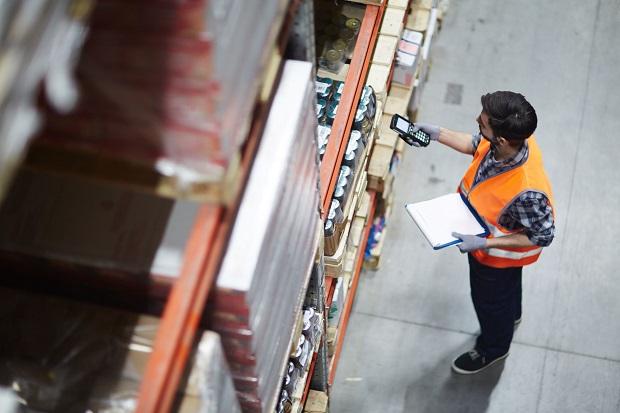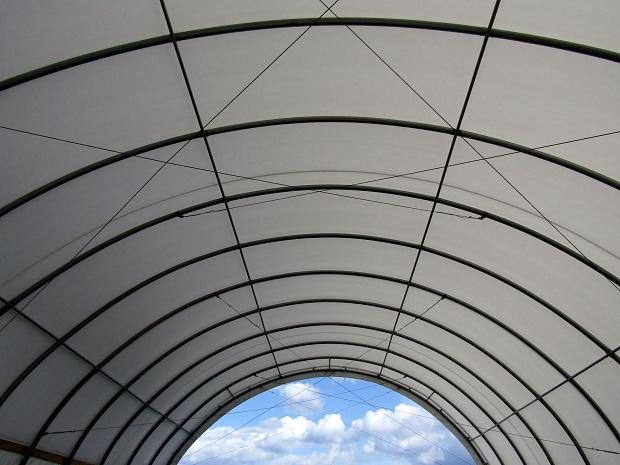In the realm of modern logistics, where efficiency, flexibility, and sustainability are paramount, fabric buildings have emerged as a highly practical tool that has improved the landscape of storage and warehousing. These versatile structures have a rich history, offer numerous advantages for storage needs, follow best practices for optimal usage, and can be sourced from various industry-grade providers.
 If you’re in warehousing or any adjacent industry, this article will act as both a primer and refresher for those working with fabric buildings, such as a tension fabric building. Its insights will help you understand why they’re regarded as one of the most useful tools in logistics.
If you’re in warehousing or any adjacent industry, this article will act as both a primer and refresher for those working with fabric buildings, such as a tension fabric building. Its insights will help you understand why they’re regarded as one of the most useful tools in logistics.
 A Brief Historical Perspective
A Brief Historical Perspective
The roots of fabric buildings can be traced back to ancient civilisations that utilised textiles and fabrics for shelter and storage. However, the contemporary concept of fabric buildings took shape during the 20th century, spurred by technological advancements and the need for rapid and cost-effective storage solutions. The use of tension fabric materials with sturdy frames paved the way for durable and easily deployable structures.
Fabric Buildings: A Game-Changer In Storage And Warehousing
Fabric buildings have rapidly gained prominence in the logistics industry due to their unique attributes that align seamlessly with the demands of modern warehousing. These characteristics include:
- Rapid Installation And Mobility
One of the standout features of fabric buildings is their quick installation process. Unlike traditional brick-and-mortar warehouses, they can be erected in a fraction of the time, enabling businesses to respond swiftly to fluctuations in demand. Furthermore, their modular design allows for easy disassembly and relocation, making them ideal for temporary storage needs or operations in dynamic environments.
- Cost-Effectiveness
Traditional warehouses often come with substantial construction and maintenance costs. On the other hand, fabric buildings are more budget-friendly due to their simpler construction methods and materials. This cost-effectiveness extends to reduced energy consumption as fabric naturally diffuses sunlight, minimising the need for artificial lighting during daylight hours.
- Climate Control And Customisation
Fabric buildings can accommodate advanced climate control options through ventilation systems, insulation, and shading solutions. This ensures that the stored goods are maintained at optimal temperatures, preserving their quality. These structures can also be tailored to meet specific storage requirements, providing customisation that traditional warehouses struggle to match.
From their simple designs to the innovations they can utilise, it’s clear why investing in industry-grade fabric buildings can offer logistics and supply chain firms the storage solutions they need. Of course, they can only provide the most benefit when used in the right ways.
Best Practices For Utilising Fabric Buildings
To harness the full potential of fabric buildings for storage and warehousing, keep the following considerations in mind:
- Strategic placement: Select a location that complements the logistics network, minimising transportation distances and optimising supply chain efficiency.
- Proper maintenance: Regular inspection and maintenance routines are crucial to ensure the structural integrity of fabric buildings. Prompt repairs can prevent minor issues from escalating into major problems.
- Storage organisation: Employ a systematic approach to arranging goods within the fabric building. This facilitates easy access, inventory management, and efficient retrieval.
- Weather considerations: Depending on the geographical location, it’s vital to account for local weather conditions and potential natural disasters. Reinforced fabric materials and appropriate anchoring mechanisms should be employed to ensure stability.
Sourcing Industry-Grade Fabric Buildings
Finding reliable industry-grade fabric building providers is pivotal to the success of your logistics operations. Here are some factors to take into account:
- Research and reputation: Look for providers with a solid reputation in the industry. Online reviews, testimonials, and case studies can provide valuable insights into the quality of their products and services.
- Customisation options: Opt for suppliers offering customisation options to tailor the fabric building to your needs. A provider willing to collaborate and adapt the design demonstrates their commitment to meeting your requirements.
- Material quality: Inquire about the materials used to construct the fabric building. High-quality fabric and robust frames are essential for durability and longevity.
- Compliance and certification: Ensure the chosen provider adheres to industry standards and regulations. Certifications from relevant authorities reflect their commitment to quality and safety.
Practical Tools For Storage Needs
For their simplicity, fabric buildings have emerged as a cornerstone of modern logistics, revolutionising the way storage and warehousing are approached. Their historical evolution and advantages—such as rapid installation, cost-effectiveness, and customisation—make them indispensable tools for businesses striving for operational efficiency. By adhering to best practices and carefully selecting reputable suppliers, companies can harness the full potential of fabric buildings and elevate their logistics operations to new heights.




Comments are closed.